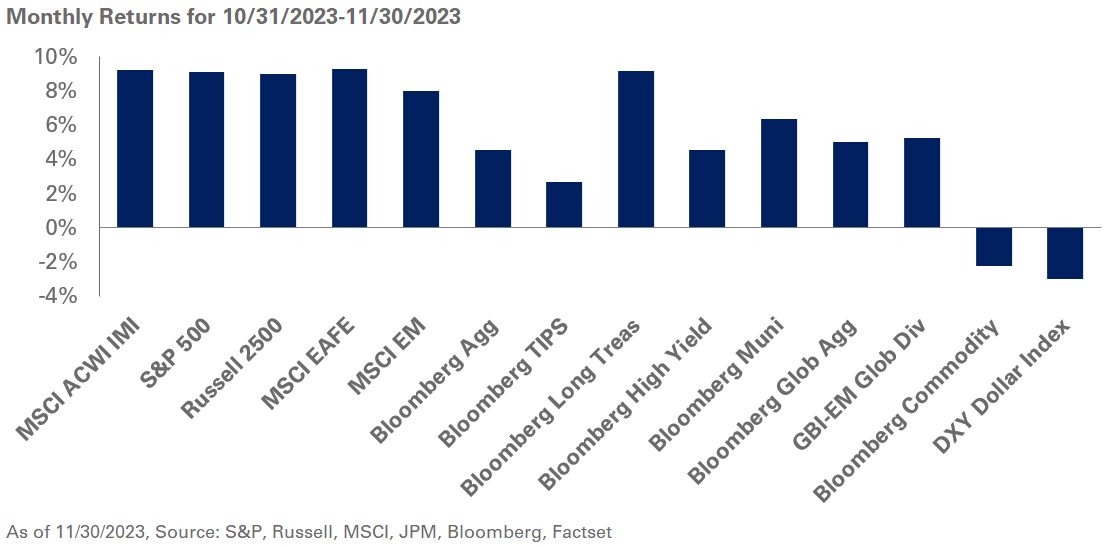Risk-on sentiment washed over markets in November as softer-than-expected U.S. inflation data strengthened investors’ belief that the Federal Funds rate had peaked, emboldening them to price in more aggressive interest rate cuts in 2024. Fed Funds futures now reflect four rate cuts next year of 25-basis points each, even as the Federal Reserve insists policy rates will remain higher for longer.
As a result, global interest rates moved meaningfully lower in November: the 10-year U.S. Treasury and 10-year German Bund yields fell 52 and 34 basis points, respectively. The downward move in interest rates fueled a rally across fixed-income assets, with longer-duration indexes posting the largest gains: the Bloomberg Aggregate Bond Index added 4.5%, while the Bloomberg Long Treasury Index rose 9.2%. In credit, option-adjusted spreads tightened, reflecting broad risk-on sentiment. The spread on the Bloomberg U.S. High Yield Corporate Bond Index fell 67 basis points to 370, fueling gains of 4.5% in November.
Amid this optimism around lower rates, global equities posted hefty returns last month. The S&P 500 Index added 9.1% in November, pushing year-to-date returns to 20.8%. U.S. small-cap stocks also gained 9.1%, as measured by the Russell 2000 Index; small-cap names exhibit greater interest rate sensitivity and have underperformed significantly on a year-to-date basis. Outside the U.S., the MSCI EAFE and MSCI Emerging Markets Indexes returned 9.3% and 8%, respectively.
In real assets, performance was mixed: interest rate-sensitive assets were in the black, while commodity prices continued to decline, underscoring uncertainty around global demand. Notably, the NAREIT Composite Index added 12% during November, pulling year-to-date gains into positive territory to 2.5%.
Despite the rally in equities last month, we remain cautious on mega-cap equity names and continue recommending investors reduce exposure to the S&P 500, while maintaining U.S. large-cap value positions. In addition, we recommend investors increase exposure to high-carry assets, including U.S. high yield, and add TIPS to capitalize on the current real-rate environment. Lastly, we encourage maintaining portfolio-level duration in line with policy targets, and we still recommend holding greater levels of cash within safe-haven fixed income to enhance portfolio liquidity.




